'We had a battle with the planners to gain approval' – one couple's journey to build a barn-style self-build
This couple's new home grew out of their love for characterful farm buildings and rustic materials
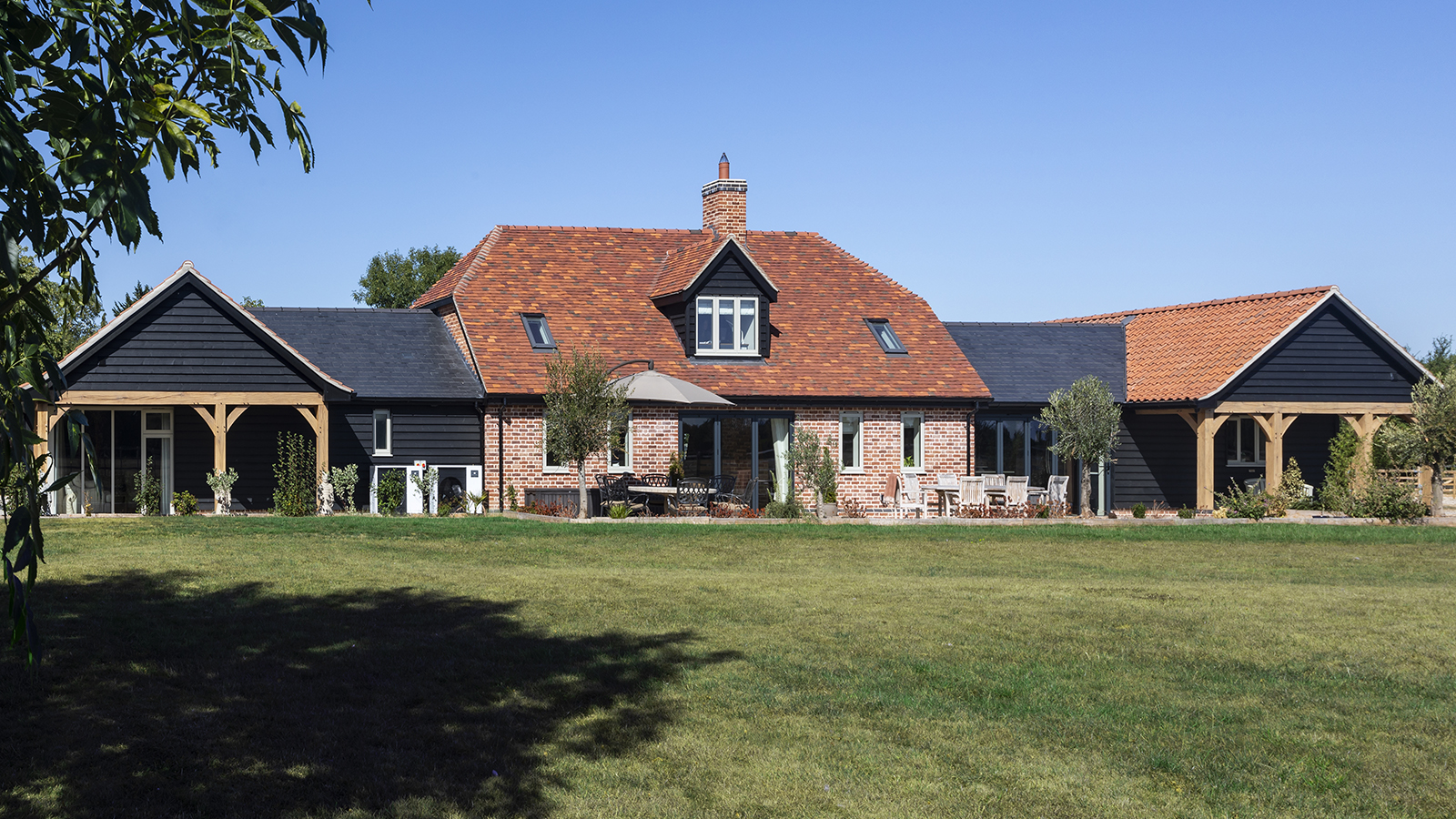
Cambridgeshire couple, Clive and Sue, had no initial intention of building a house on their nine-acre plot of land, but a change in planning rules opened up a new and exciting opportunity.
“Forty years ago, I bought nine acres of land and some run-down farm buildings purely as somewhere to keep my daughter’s horse,” says Clive. “Back then there was absolutely no chance of building in the open countryside, but years later the planning rules changed which allowed us to convert our Victorian stable block and cowshed into a home.”
The family lived in their conversion for several years, enjoying the secluded Cambridgeshire setting, which stands one mile outside the nearest village boundary. Once Clive had retired, the couple applied to replace an old asbestos warehouse and corrugated storage unit on the land with a brand-new house designed exactly to their requirements.
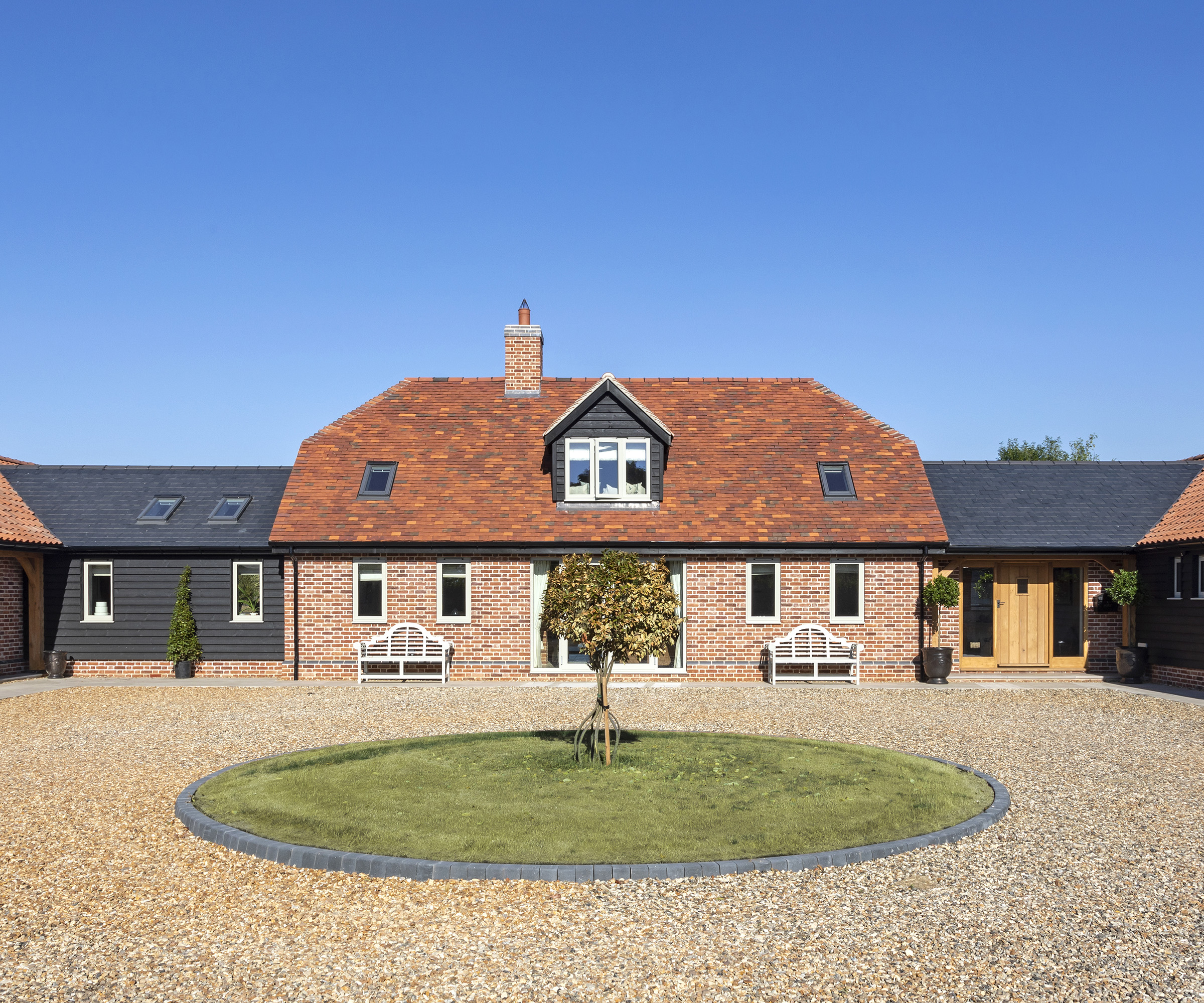
The courtyard of the new single-storey house has created a private outdoor space
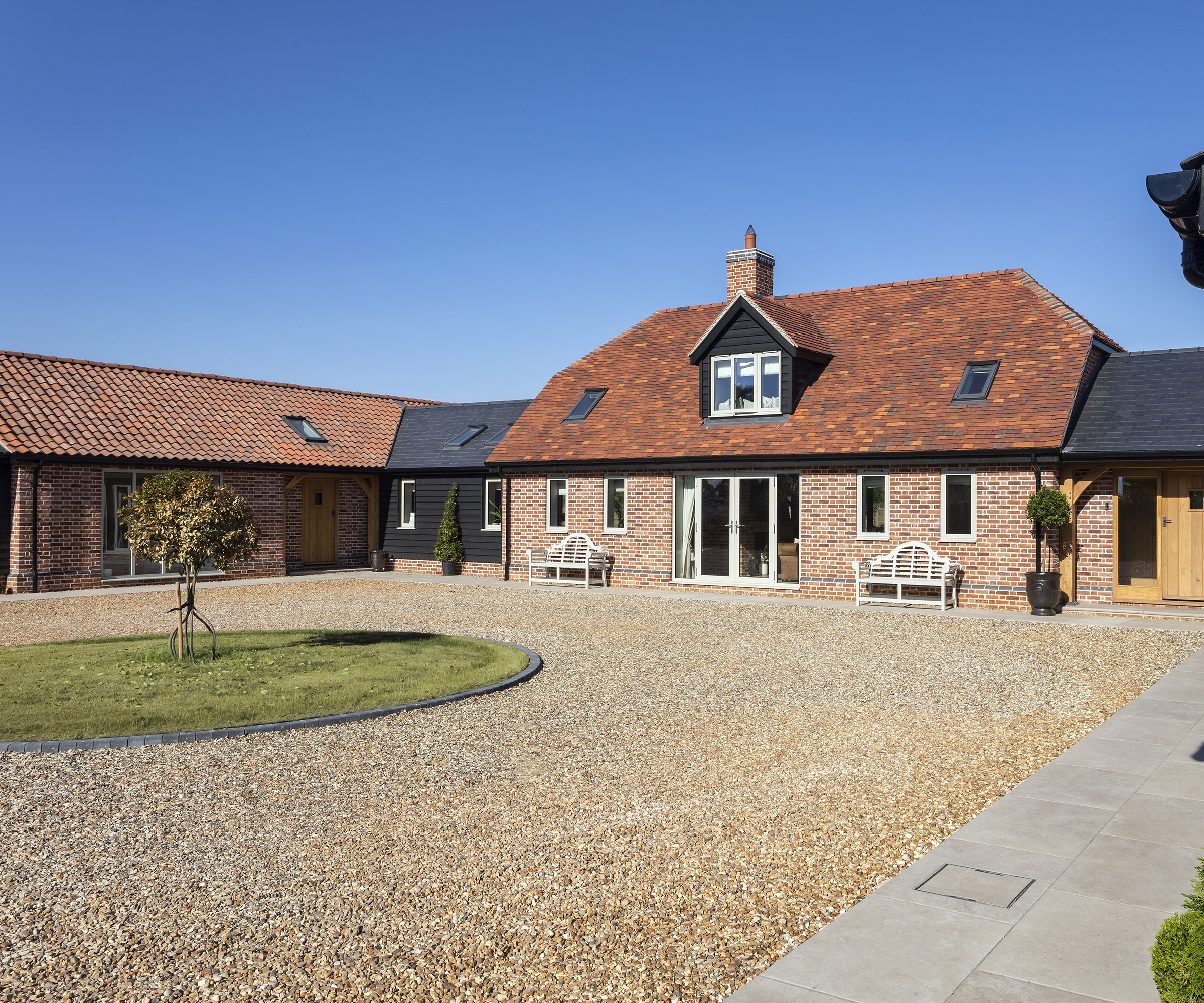
New building materials, chosen for their rustic appearance, give the impression of a converted and extended barn
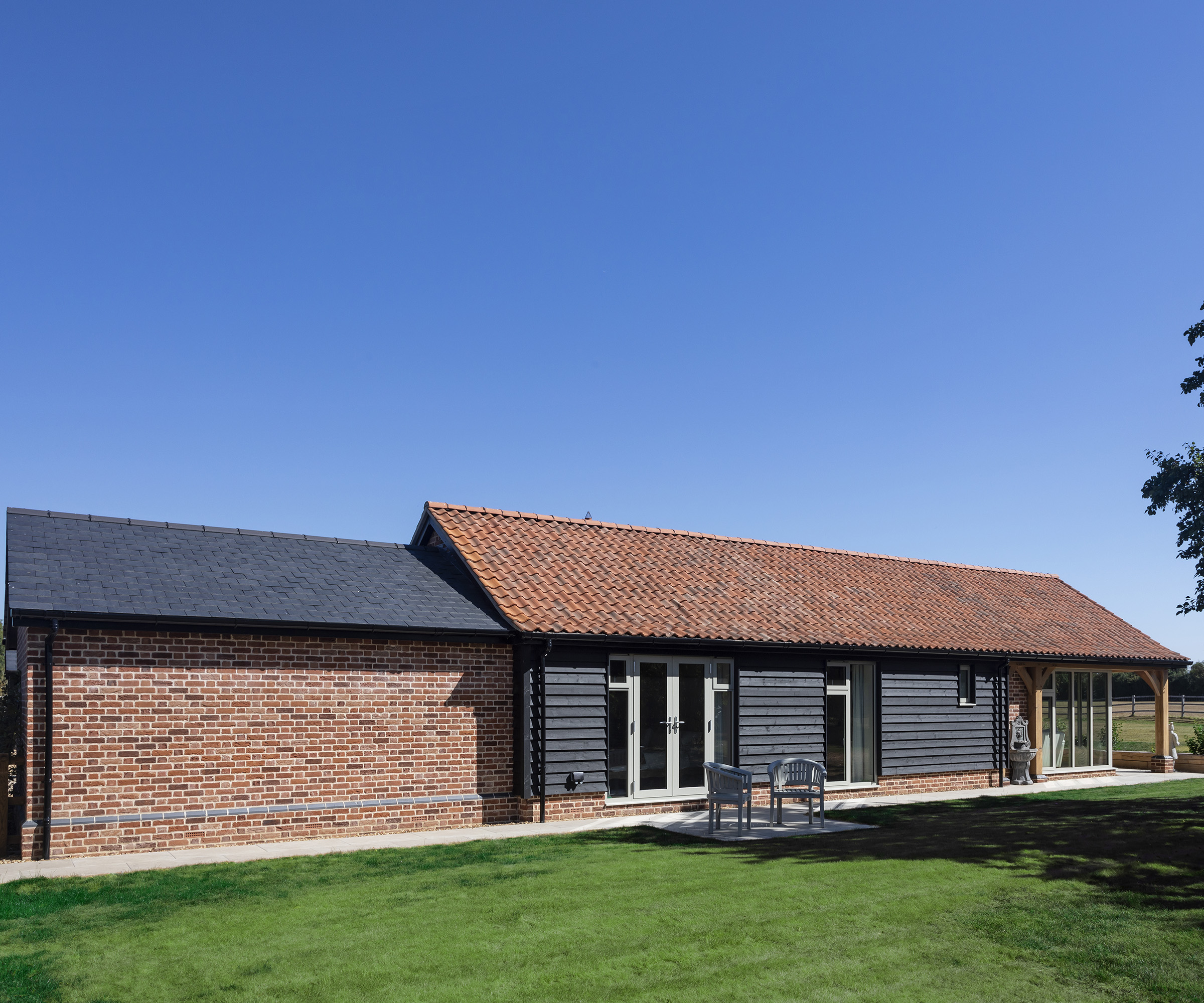
The new home replicates the look of a traditional agricultural building
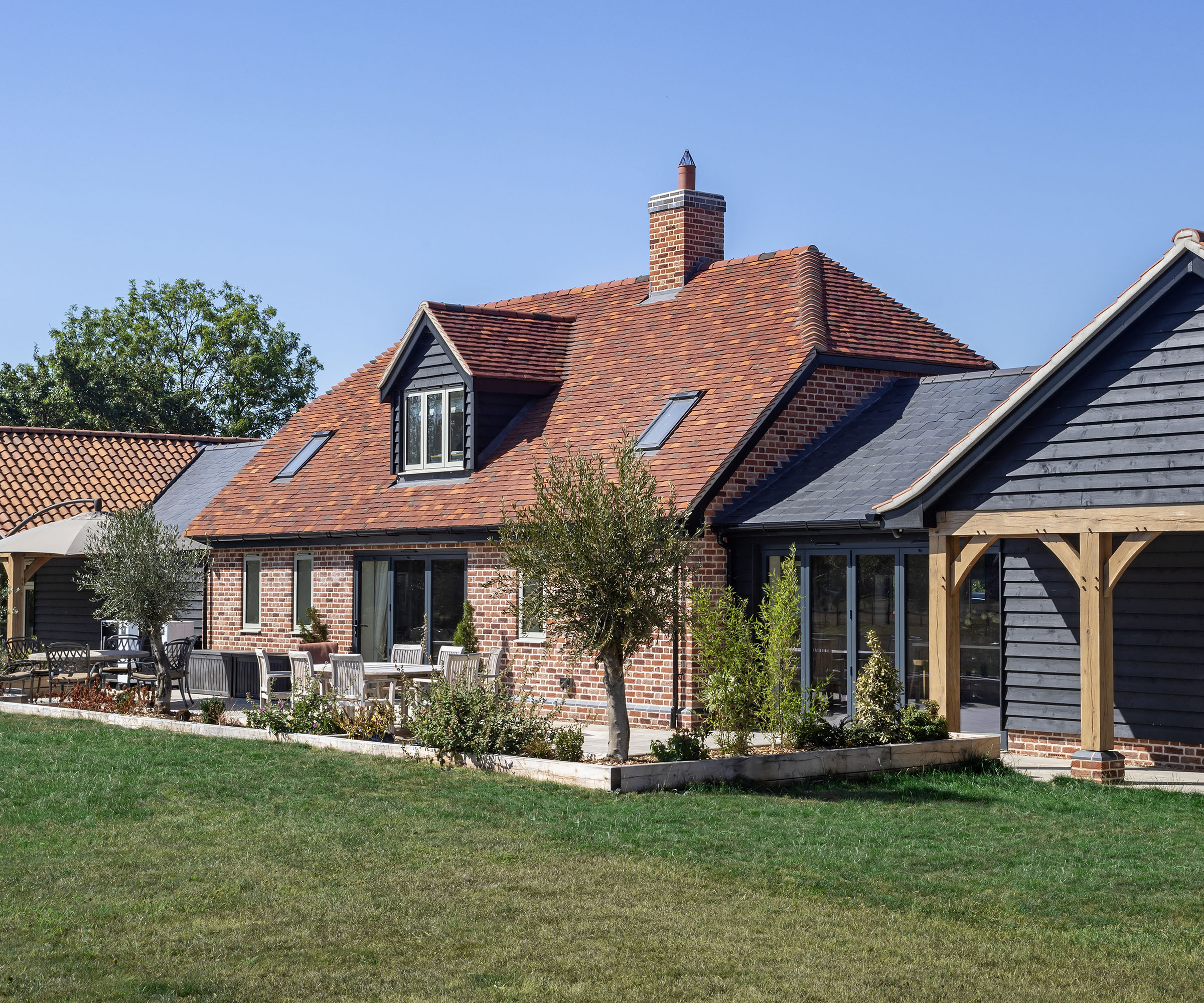
The planning journey begins
“The planners set restrictions on both the height and size of the overall footprint, which they said should be smaller than the commercial buildings it replaced,” says Sue.
“We chose to work with the same architectural technologist who had designed our conversion, and he came up with a U-shaped courtyard plan for the new house. We copied elements of our previous barn conversion, too, tweaking and changing some spaces.”
Predominantly single-storey, with a mezzanine office area overlooking the open plan kitchen-diner, the four-bedroom property was designed to emulate a series of converted barns and outbuildings, clad in a variety of materials, including rustic bricks, black-stained weatherboarding, slates, peg tiles, and pantiles.
“We had quite a battle with the planners to gain approval, but planning permission was eventually granted,” says Clive.
Bring your dream home to life with expert advice, how to guides and design inspiration. Sign up for our newsletter and get two free tickets to a Homebuilding & Renovating Show near you.
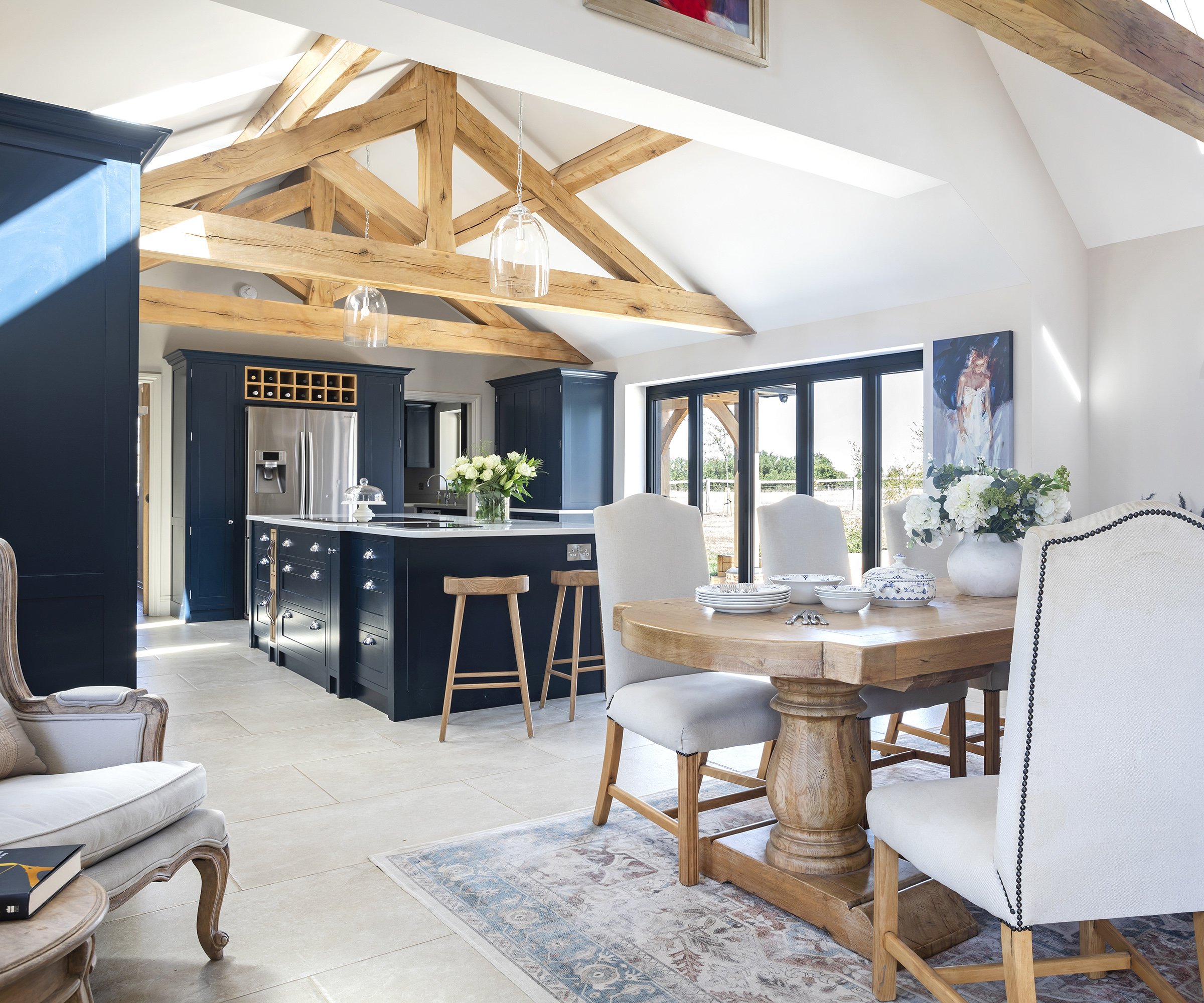
The exposed oak frame adds character to the new house
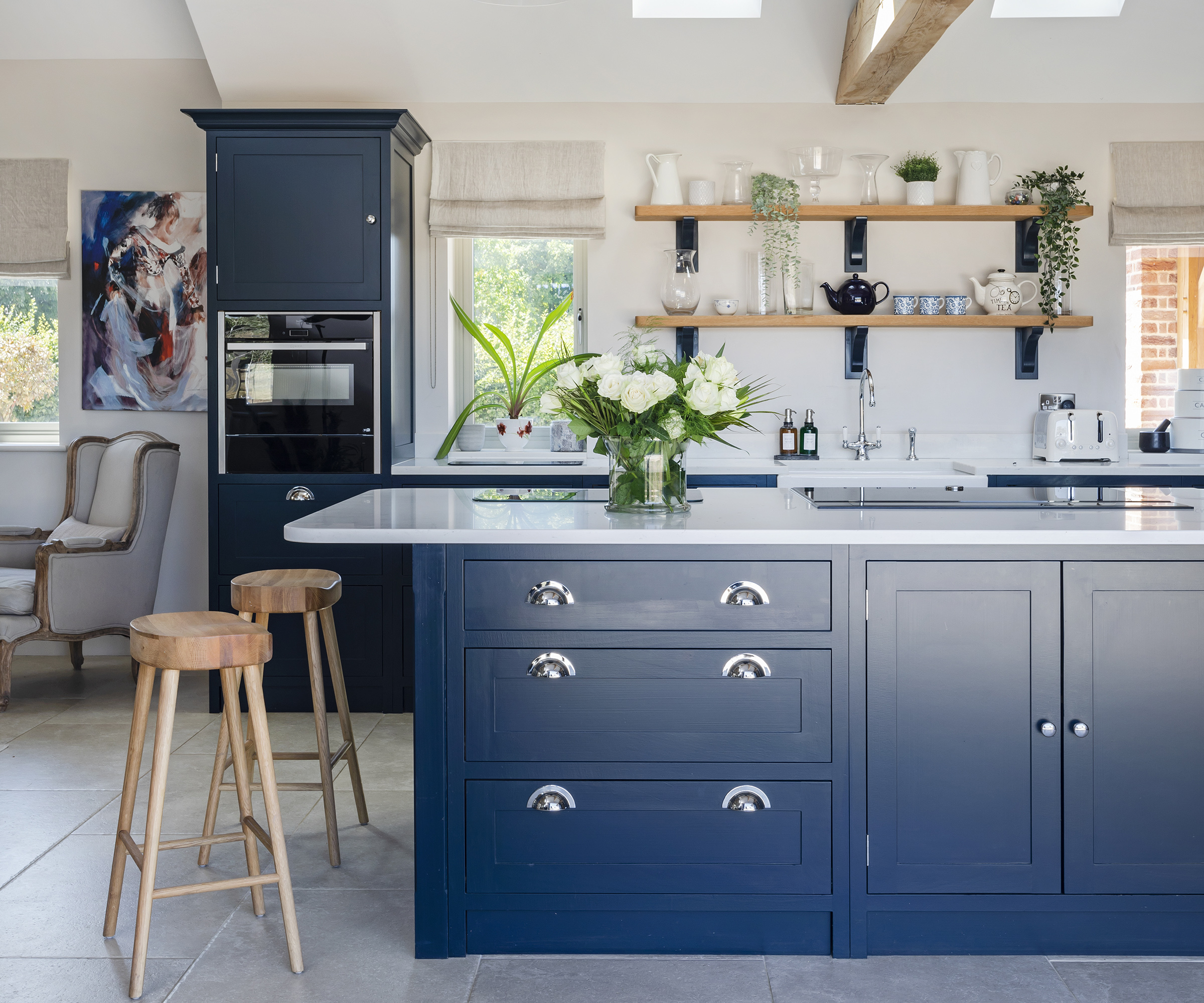
The central island, with its quartz worktop, creates a stunning focal point in the kitchen
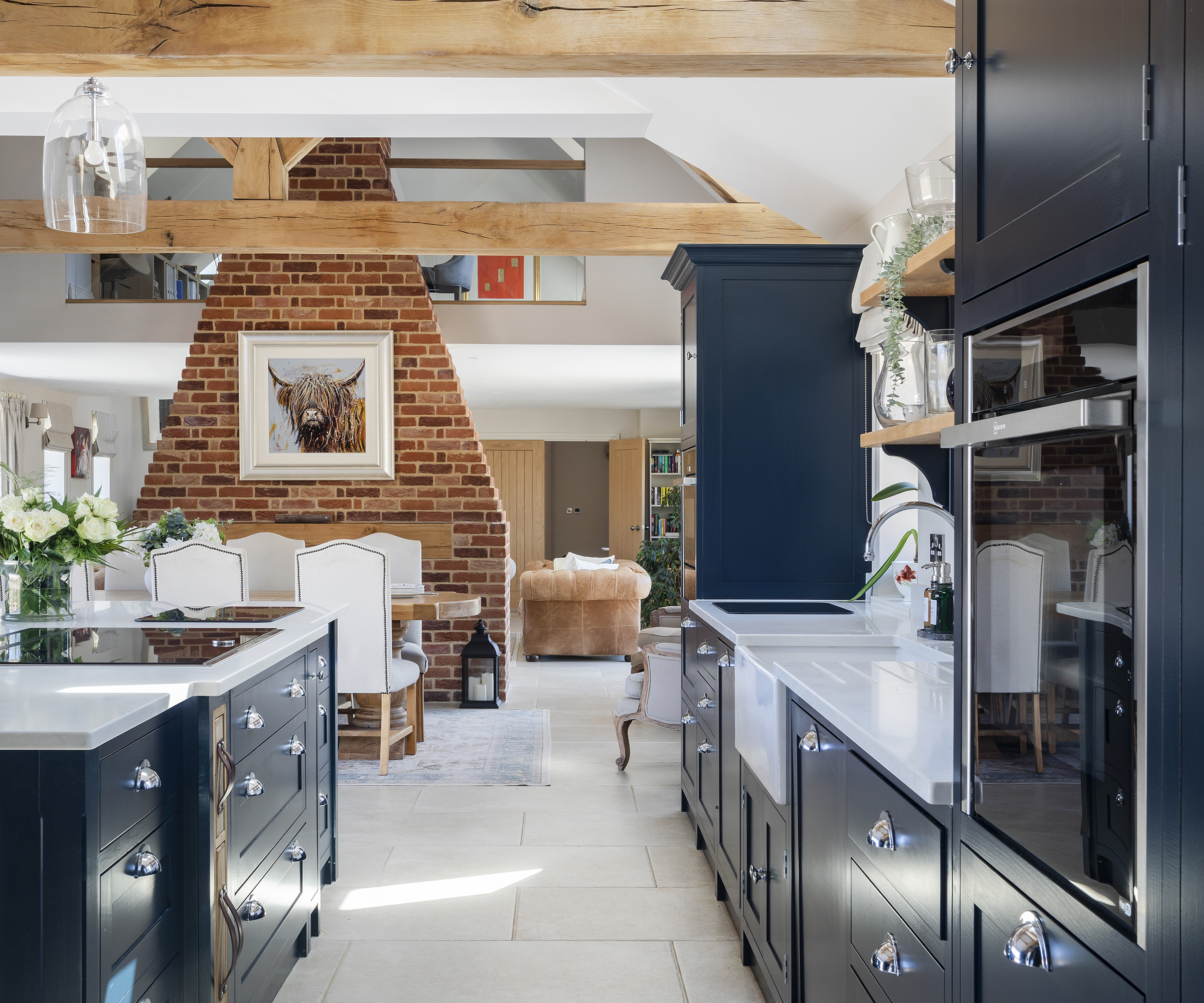
High vaulted ceilings in the open-plan kitchen diner were made possible by building the majority of the house on one level
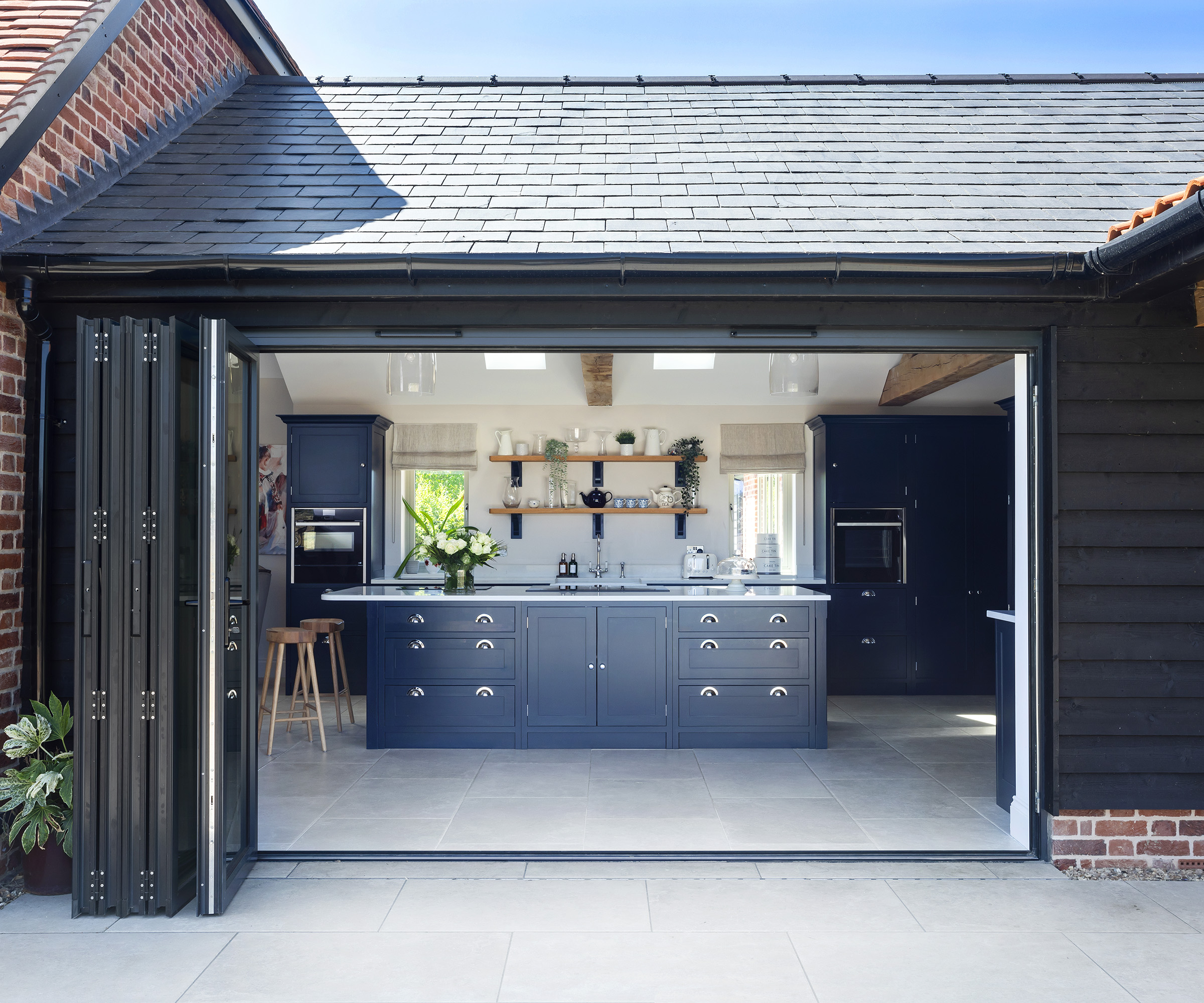
Bifolding doors lead out to the patio area
Starting the work
A local builder was employed, who had tendered for the project and lives just one mile away from the site. Clive was involved in buying some of the materials and oversaw the build, while the couple continued to live next door in their converted barn.
“Covid restrictions were in place during the first stages of the house demolition and build, but the small team working outdoors could easily comply,” he recalls.
The site was cleared, and standard one-metre-deep concrete strip foundations excavated in clay soil, ready for blockwork external walls to be built. “For the brick house cladding, we found the closest match to our existing old stable block,” says Sue. “They’re new but have the same rustic appearance as the originals.”
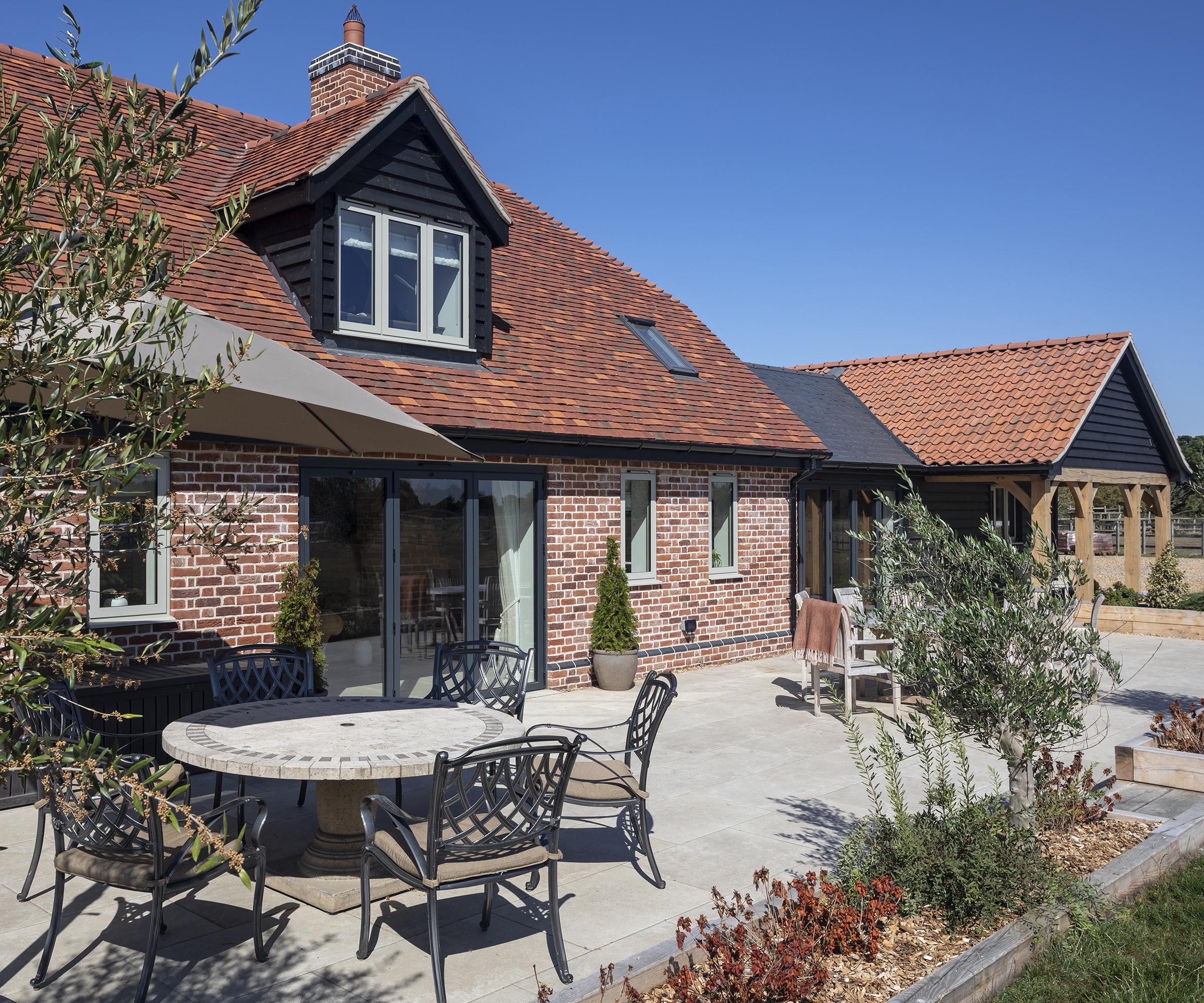
There are a series of patio spaces to the rear of the house
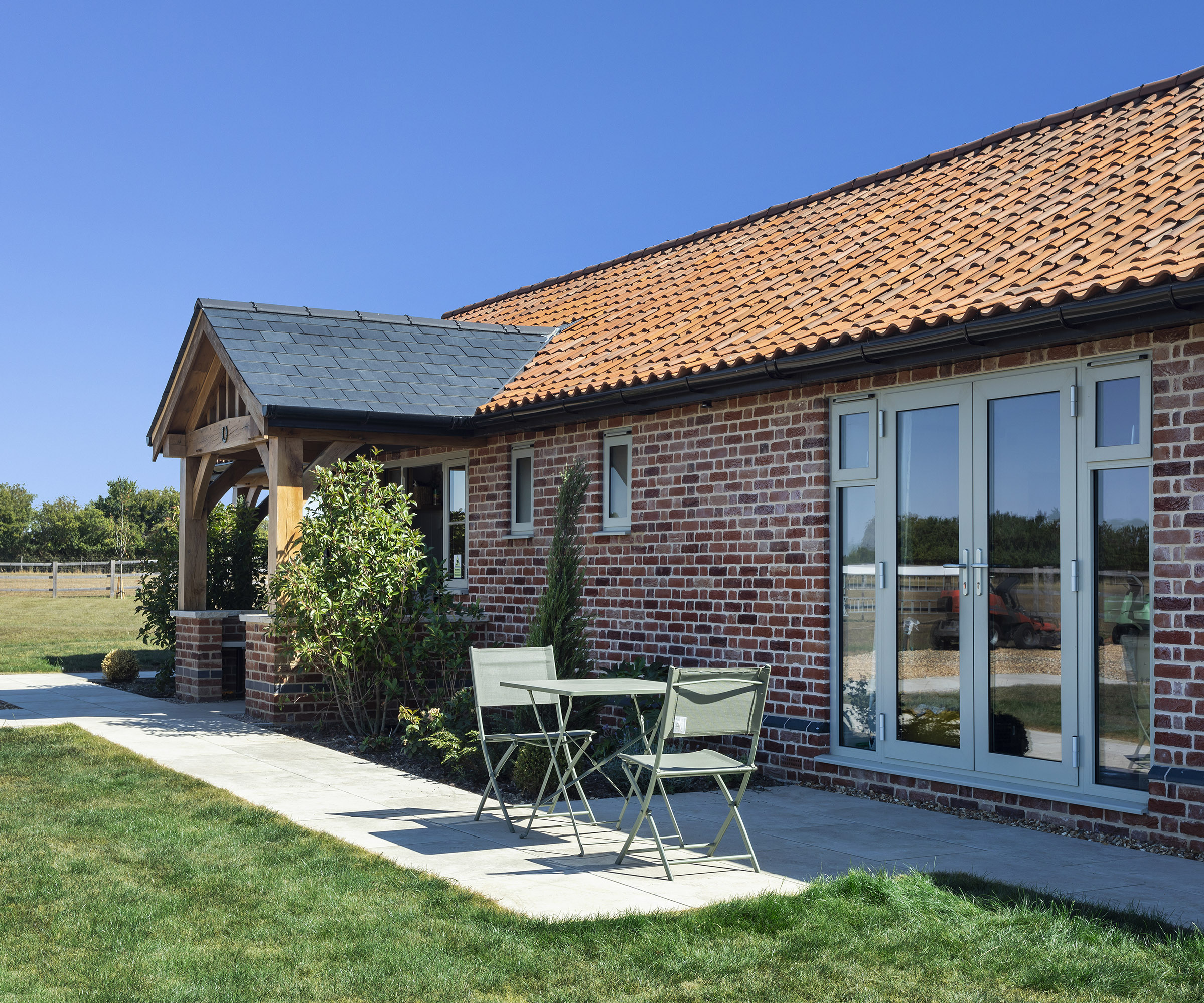
The house is designed to make the most of the countryside views
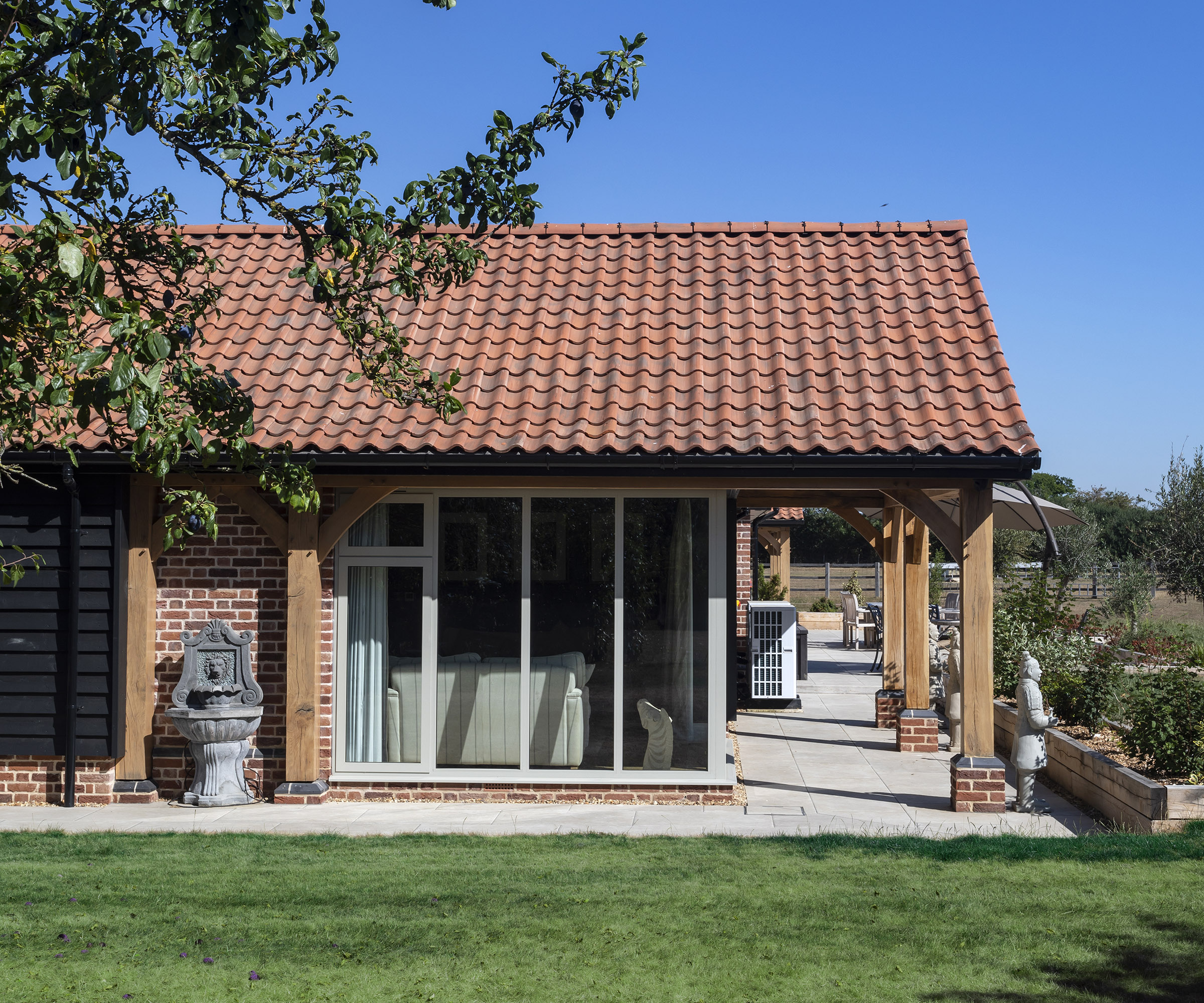
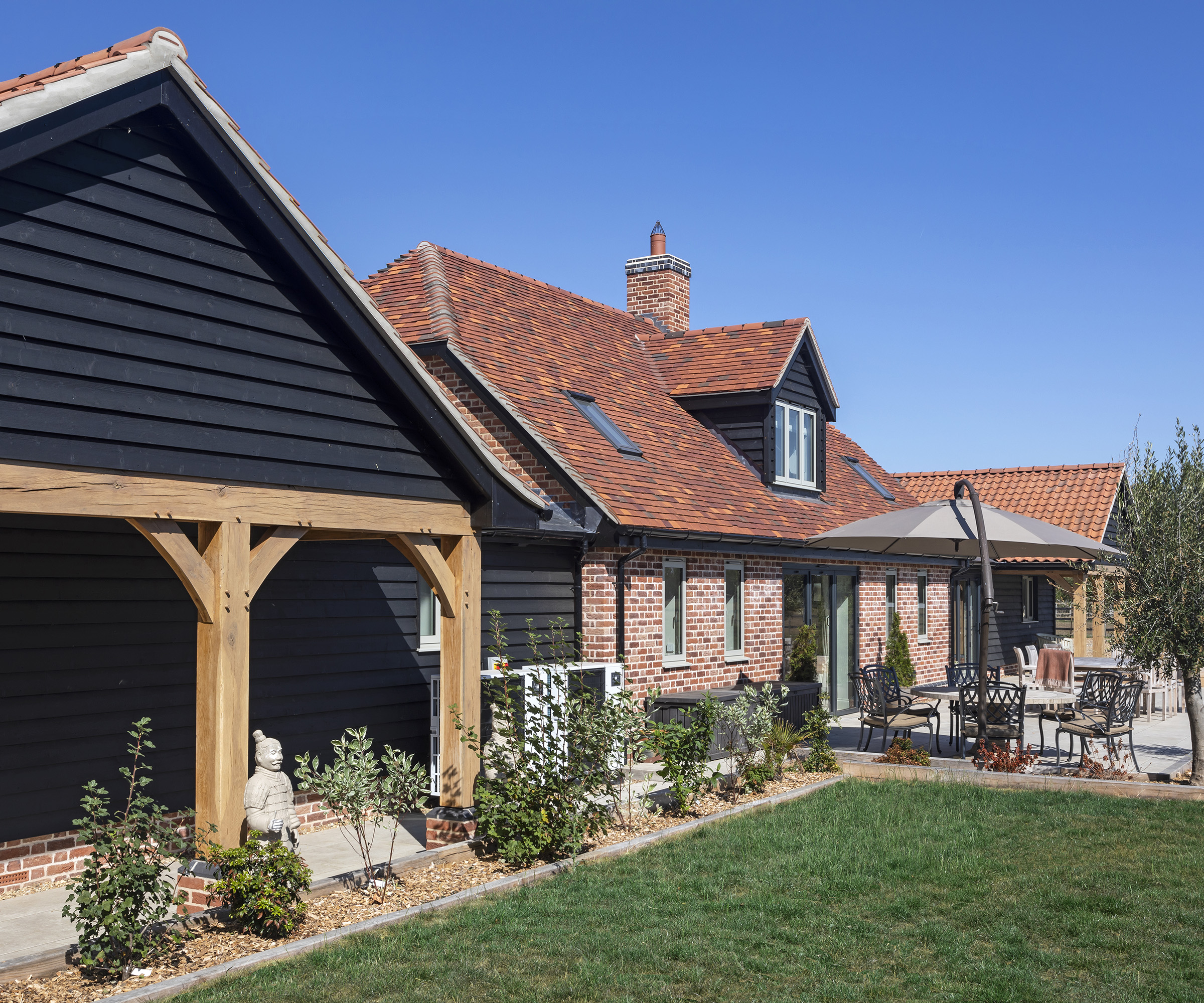
Low-maintenance choices
“We love the look of natural building materials but decided not to specify oak windows this time, partly because of the cost, so our builder showed us some aluminium alternatives at a saving of £60,000,” recalls Clive.
“Low-maintenance finishes were important, and we chose large porcelain floor tiles, after finding the natural limestone tiles we’d laid in the barn conversion difficult to keep clean. To be honest, we could hardly tell the difference when we went to the showroom, and they make life so much easier.”
Each of the four ground-floor bedrooms has a wetroom-style shower room, chosen for ease of access and cleaning. “Our private water supply has poor pressure, so we installed a system in the plant room which stores and pressurises water around the entire house,” says Clive.
The couple also purchased two air source heat pumps to power underfloor heating, with a biodigester for waste as a more sustainable alternative to a standard septic tank.
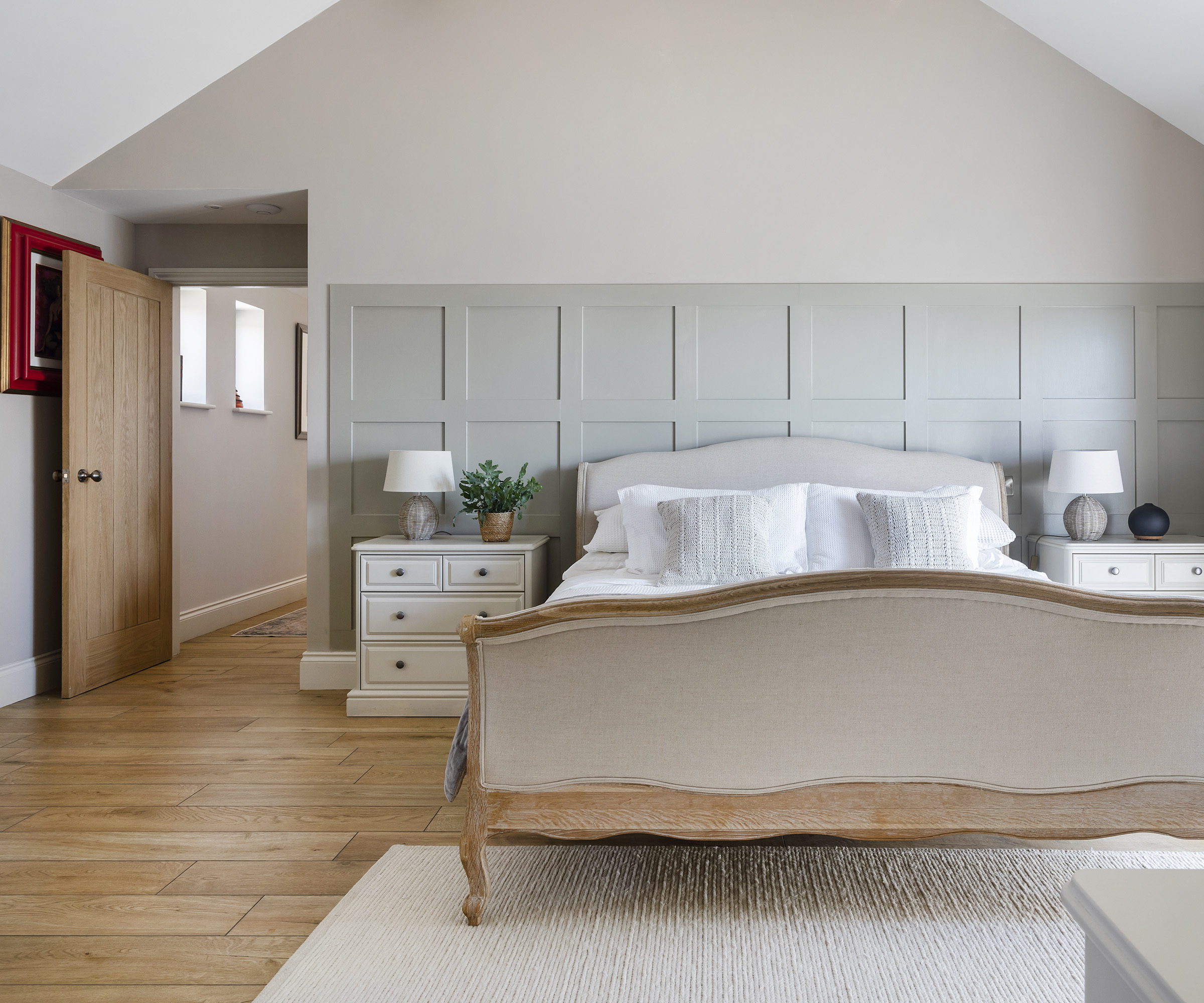
Wood-effect porcelain tiles have been laid over underfloor heating for a hard-wearing finish with a warm feel

A monochrome scheme in the master bathroom helps create a timeless feel
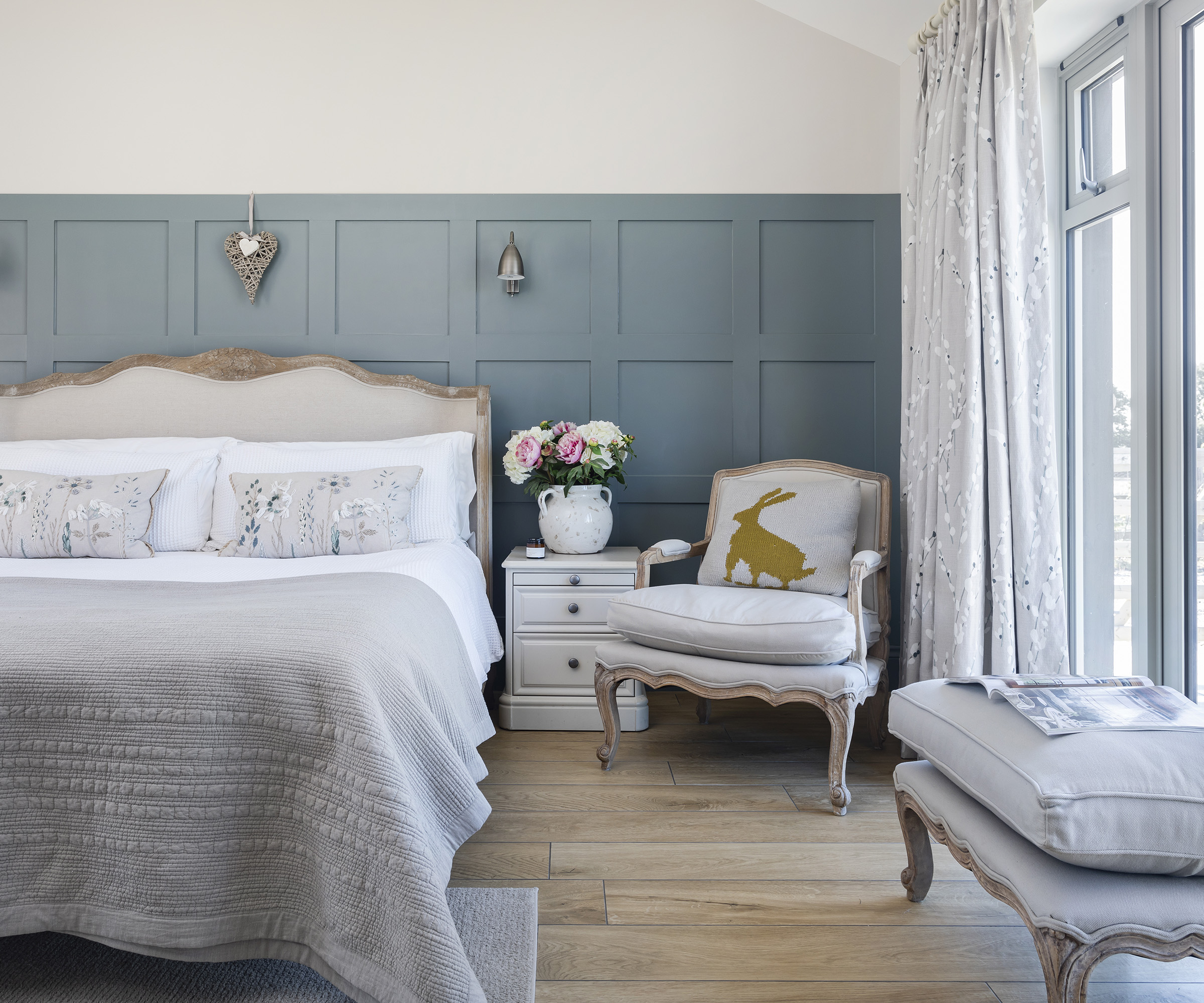
Clive made the wood panelling in this bedroom from strips of MDF
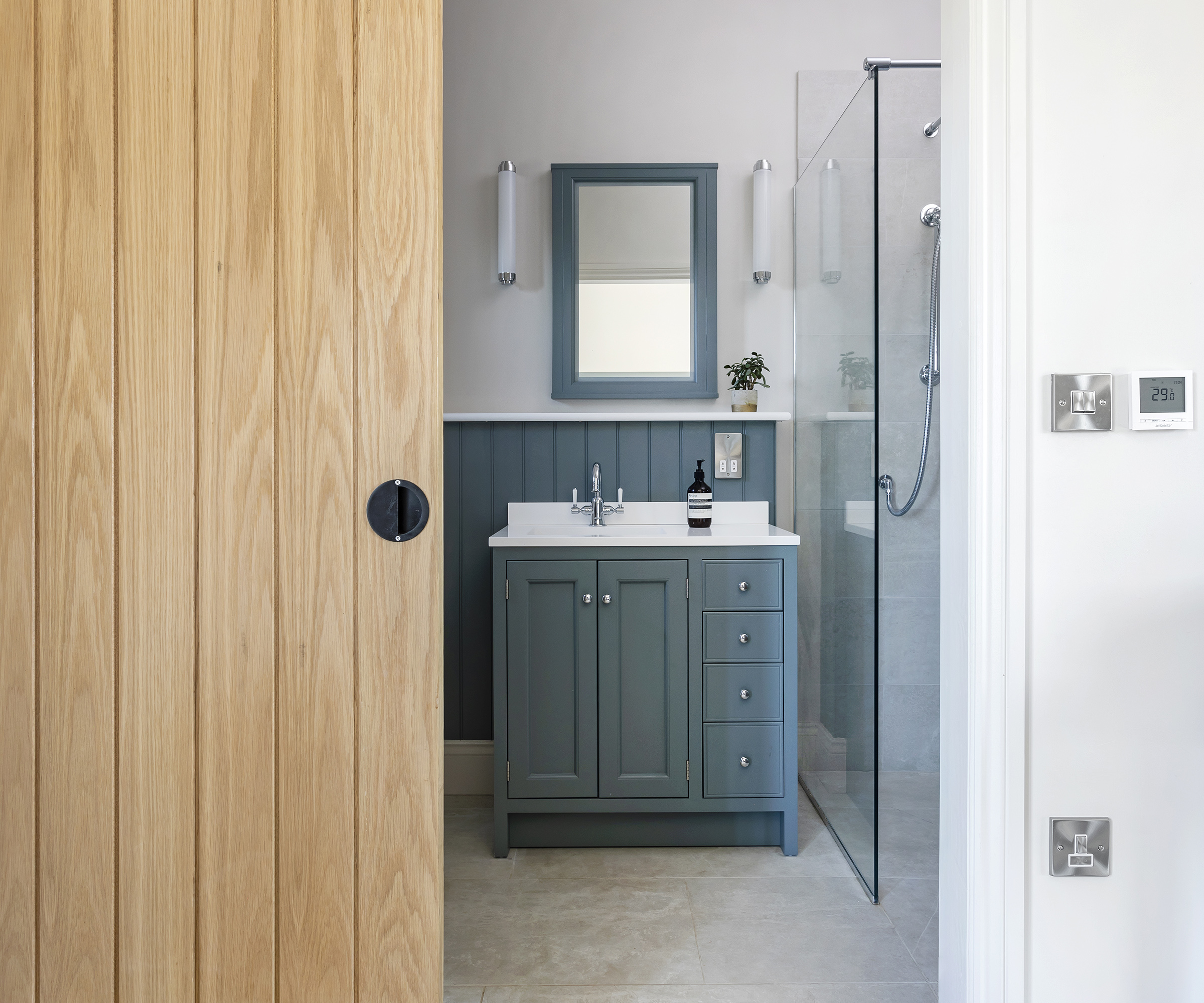
Each of the bedrooms has its own en suite bathroom
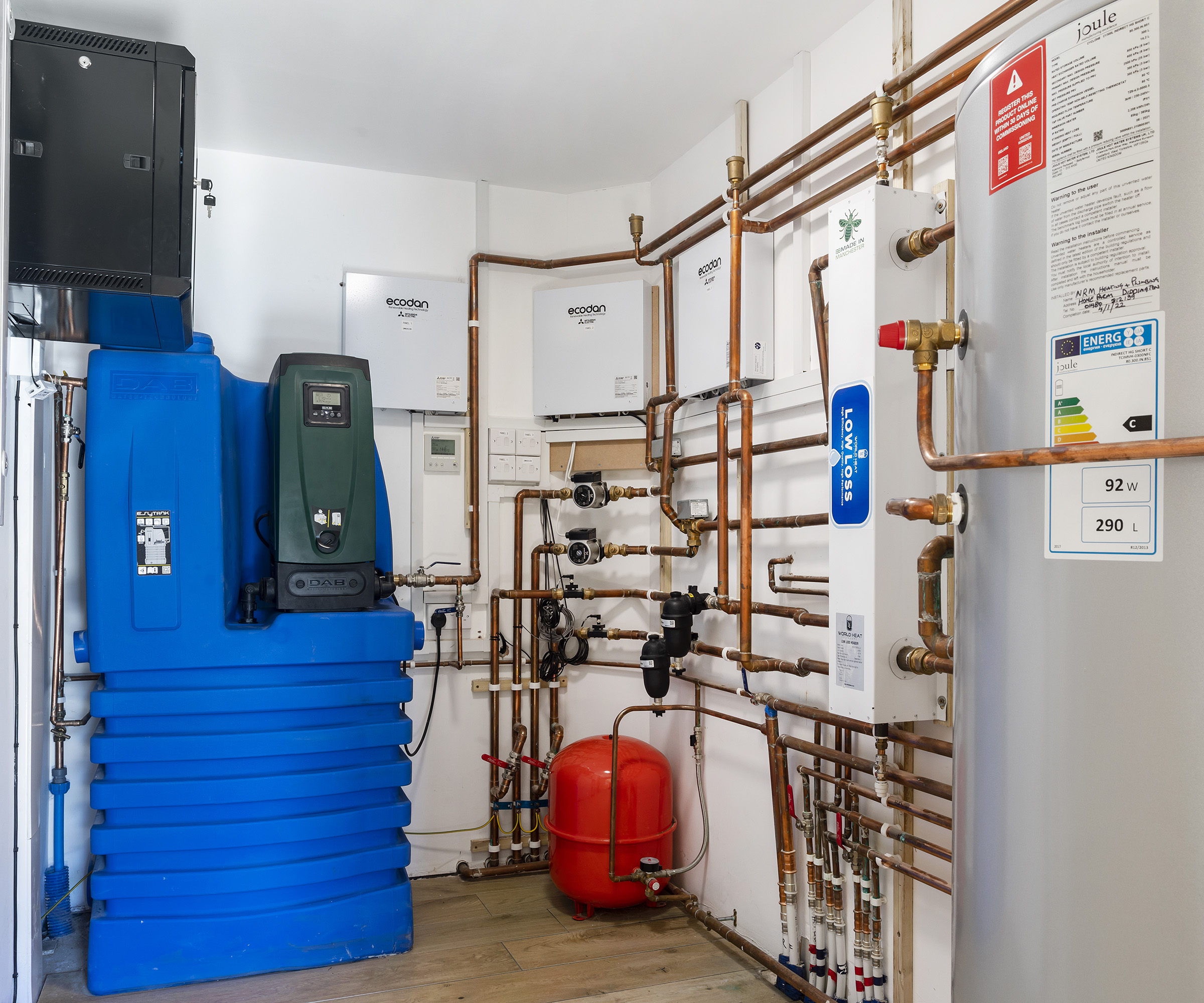
The plant room is located off the main entrance hall
Key features for style and convenience
“It’s the details which really make the design work for us,” explains Sue. “I’d always wanted a walk-in larder, and there’s also a separate utility room, with a drinks station in the kitchen which includes a boiling water tap for virtually instant cups of tea.” The couple incorporated a boot room and a designated dog shower, which helps to keep the house clean after muddy country walks.
Library shelving was installed for their collection of books, and Clive built a window seat with storage space below in Sue’s mezzanine office. As a former engineer, his attention to detail was also put to good use making bedroom wall panelling ideas from strips of MDF.
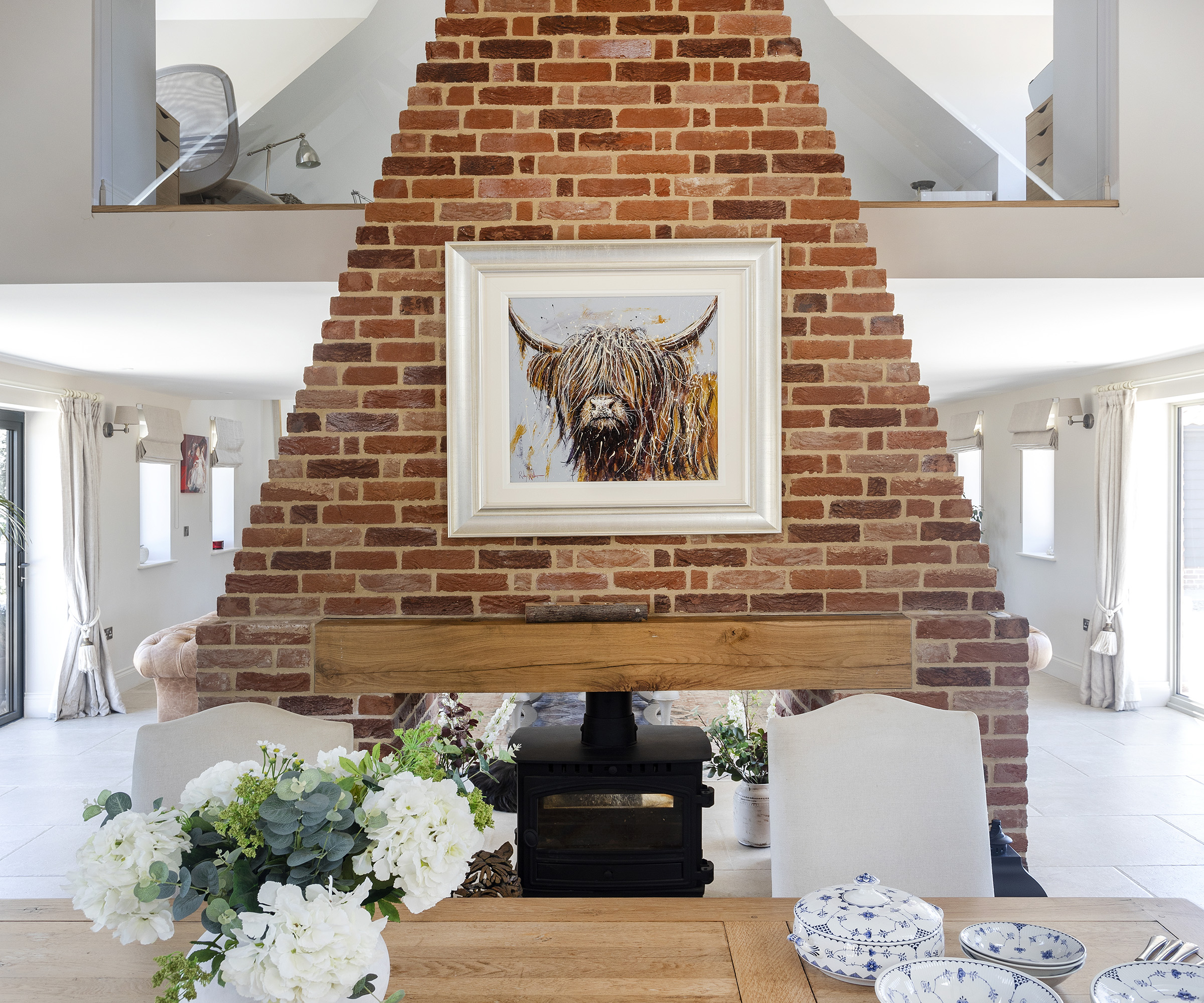
A feature brick chimney acts as a divider in the open-plan space
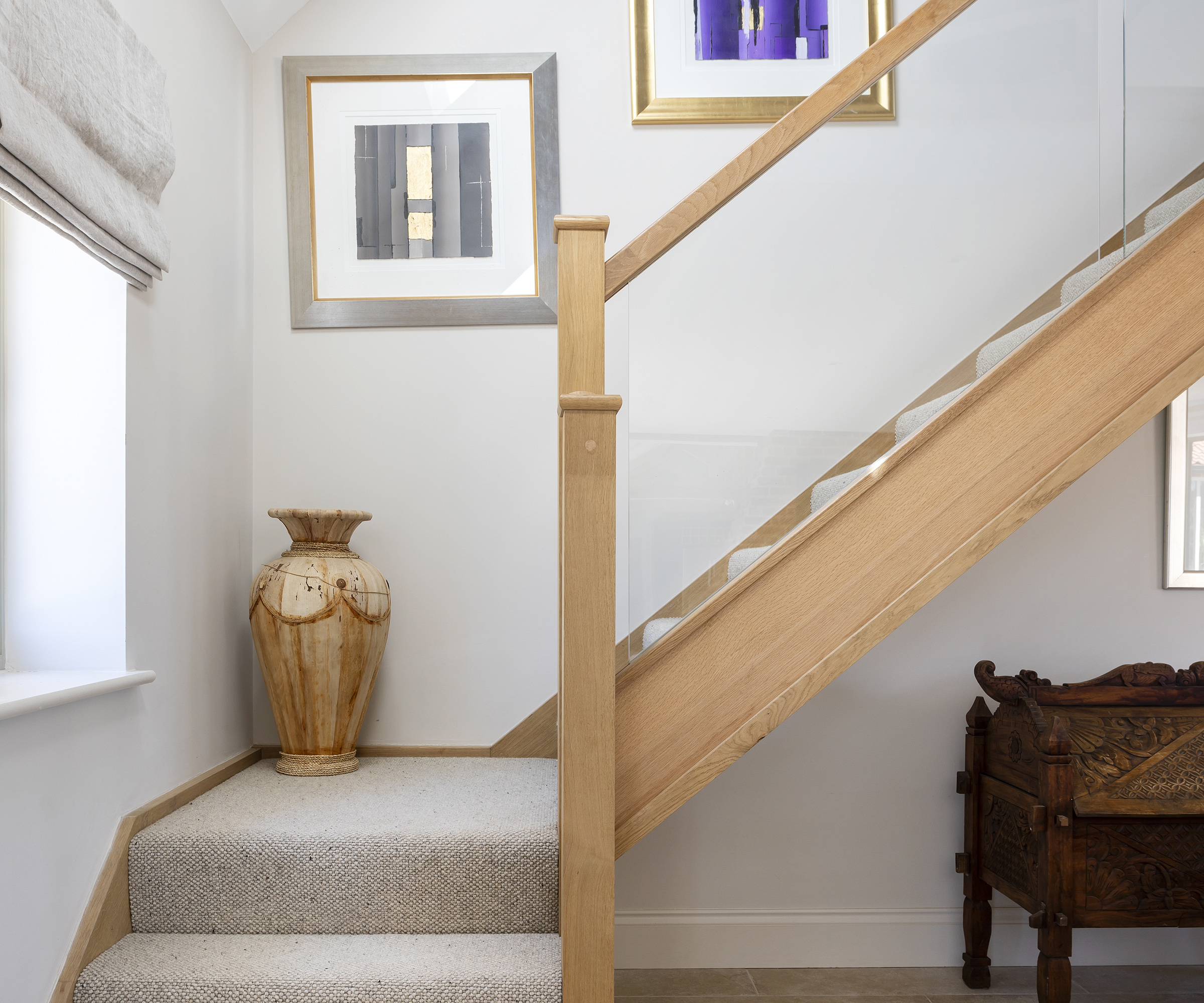
The modern staircase leads up to the mezzanine office area
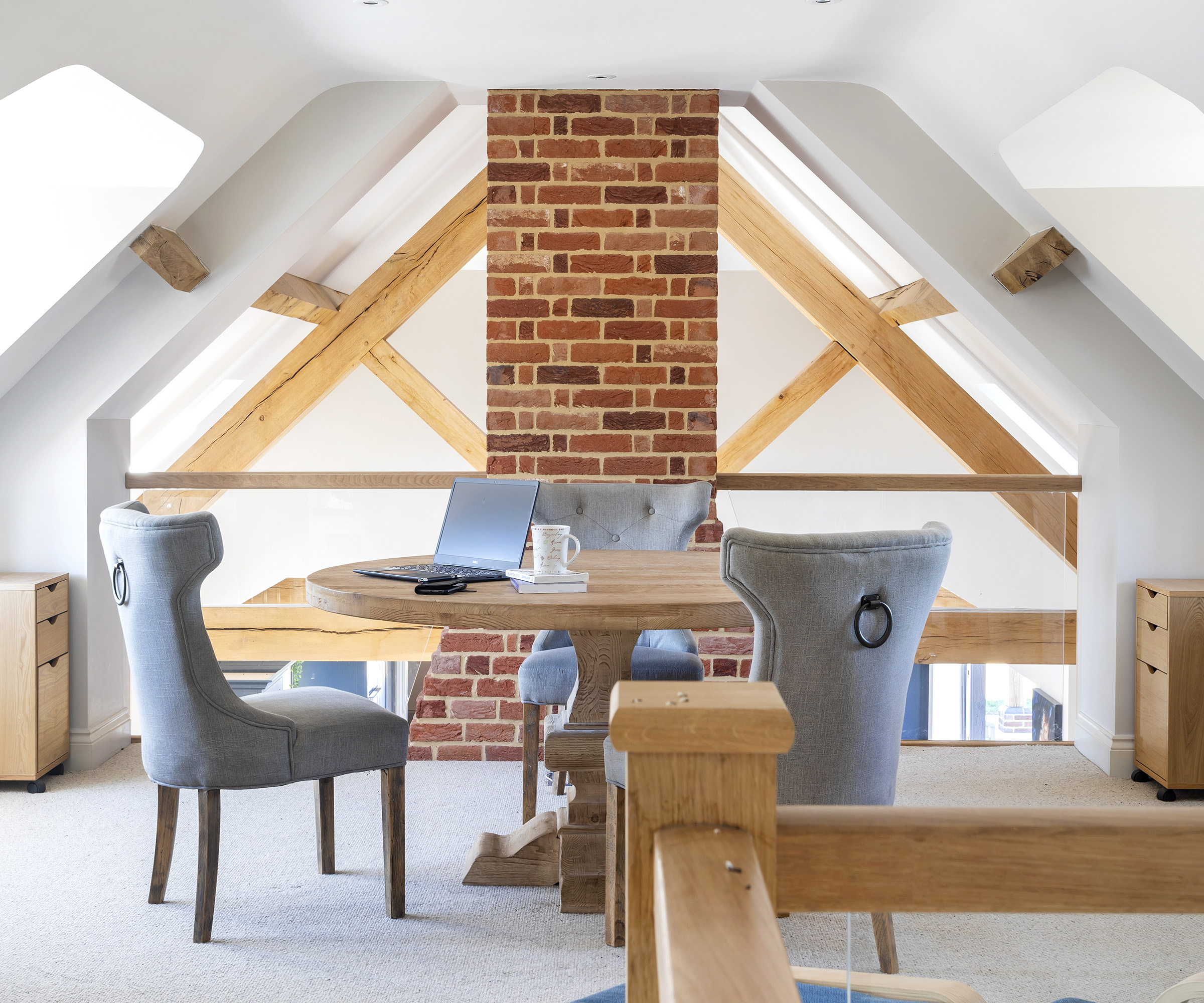
The mezzanine office offers views across surrounding fields and overlooks the kitchen diner below through a glass balustrade
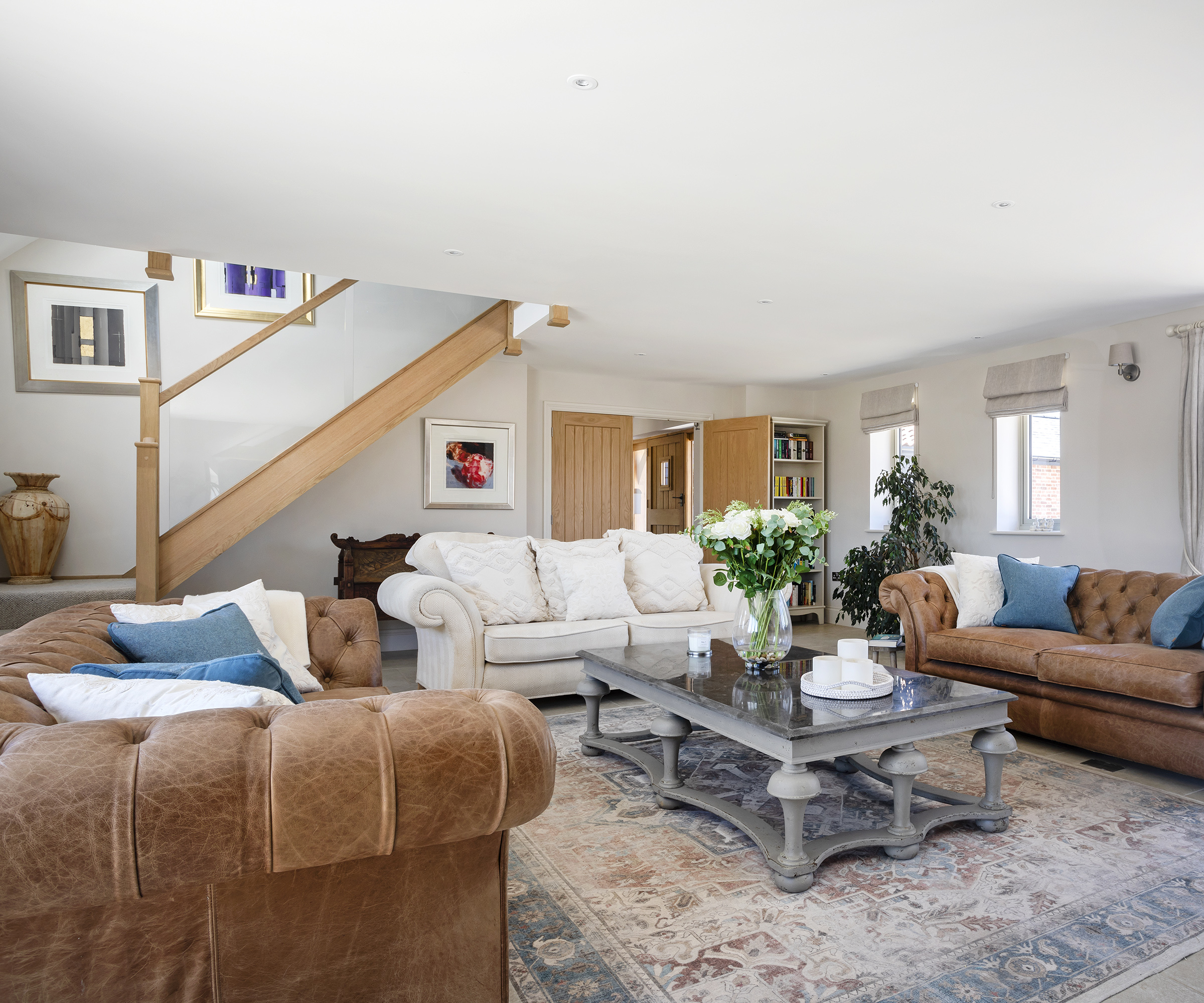
A lower ceiling height creates a cosy feel in the family room
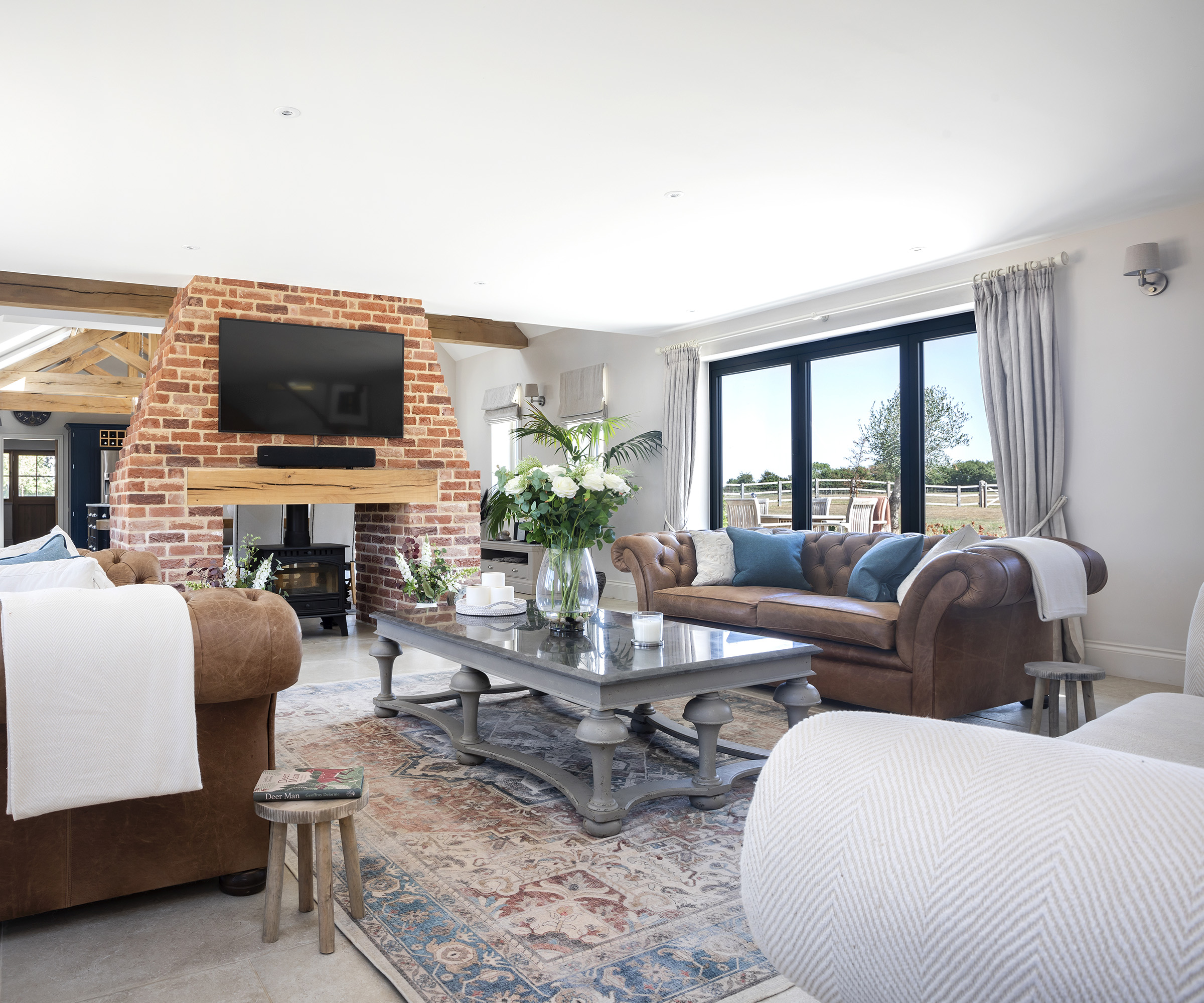
Reflecting on their achievement
“The house was easy and enjoyable to build,” says Clive. “Despite Covid, our builders only went a month past the planned finish date.” Once their new home was complete, the family sold their barn conversion with two acres of land, leaving them seven acres on which to keep ducks, pygmy goats and alpacas, who wander around the outside space.
The elevated site enjoys country views for miles around, and an existing natural pond draws birds and wildlife to the peaceful setting. “We love living here, and building a house on the land allowed us to create a low-energy home for retirement, designed exactly for the way we live,” says Sue. “It was the perfect solution.”
Although Clive and Sue didn't need to convert a barn for this project, using their previous barn conversion idea as a starting point has allowed the couple to successfully create a characterful home that sits beautifully in its surroundings.

Debbie Jeffery is a distinguished journalist and seasoned property expert with an extensive career spanning over 25 years. Her expertise encompasses a wide range of technical knowledge, with a particular focus on crafting comprehensive articles covering various facets of residences and gardens. Her work has graced the pages of prominent national newspapers, architectural publications, and home-focused magazines, earning international recognition through syndication. Beyond her journalistic pursuits, Debbie also lends her talents to public relations and copywriting projects for diverse businesses and architectural firms. She has had the privilege of conducting interviews with numerous notable personalities and celebrities, and she regularly writes case studies for the Homebuilding & Renovating print magazine.
